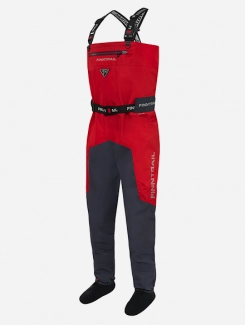Snowmobile Safety Tips for Riders of All Levels
Make sure your snowmobiling experience is the exhilarating one it should be by learning and using these snowmobile safety tips and headache preventers.
Learn State Laws and Regulations
First, make sure your snowmobile excursion isn't hindered by the law by knowing and staying up to date with your state's laws and regulations.
Age restrictions vary by state and can make it illegal for persons under a certain age to drive a snowmobile or drive one without a safety certificate. You may be required to register your snowmobile or purchase a trail pass. You may or may not be allowed to drive your snowmobile in town. Those are just a few examples.
You can contact your local law enforcement agencies, Department of Natural Resources, snowmobile dealer, and/or snowmobile club for information in your area.
Have an Insurance Policy
Having an insurance policy for recreational vehicles will lessen the impacts to your wallet and your stress-level should trouble arise. Consider collision coverage, bodily injury liability coverage, property damage liability coverage, and comprehensive coverage.
Snowmobile Safety Tips

Complete a snowmobile safety course
You may be required to take a snowmobile safety course and have a certificate to legally ride a snowmobile in your state. Even if it isn't required, taking the course is a wise idea.
The course will help you understand your machine, including the various parts and how the machine operates. You'll learn riding skills, hazards to avoid, how to handle emergencies, and how to troubleshoot problems with your snowmobile.
Keep an eye on the weather forecast
Check the weather and trail conditions when planning your snowmobile excursion and before you head out to make sure the trail isn't frozen, the temperature and wind chill aren't too low to be safe, or there isn't a blizzard causing white out conditions so you won't be able to see.
You'll also want to make sure you're suited up in the right clothes for the weather. Always dress warmly, including choosing moisture-wicking layers and avoiding cotton that can freeze if it gets wet. The colder it is, the warmer your clothes need to be.
Learn and use proper hand signals
You won't be out there alone, or you certainly can't guarantee you will be. This means you need to be able to communicate with other riders.
Some of the most used hand signals include:
- Stop - raising your left arm straight up over your head with the palm open
- Slow down - raising your left arm and pointing and moving the arm downward
- Turn left - raising your left arm and pointing it straight out in the direction of your turn
- Turn right - raising your left arm to shoulder height so it is bent at the elbow and pointing upward with the palm open
Learn all of them and practice so it can become natural to use them on the trail.

Follow trail etiquette
To share the trail safely and enjoyably, you need to learn and observe trail etiquette such as keeping to the right side of the trail, riding single file, and observing right of way. Everyone should be being courteous and avoiding causes of and escalation to trail rage.
Stay in shape
You will probably be surprised to learn how strong you need to be and all the muscles you'll be using on your snowmobile. Snowmobilers have pre-season workouts to get themselves in shape, covering their shoulders, forearms, abs, back, and lower body. There's a ton of information online so just Google snowmobile exercises and pick the videos/articles that work for you.
Don't bring children under 6 on the snowmobile
Children under 6 years old are not capable of the physical strength to safely ride a snowmobile even as a passenger. If anyone you are thinking of bringing with you can't hold on long enough for the ride, don't bring them.
Avoid common mishaps
Snowmobiling is a serious activity with some risk. You can damage or crash your snowmobile and cause bodily injury to yourself or passengers such as fractures, lacerations, contusions, concussions, and drowning.
Stay safe on your snowmobile by:
- not driving faster than the trail or your control over the vehicle demand
- staying alert and focused
- driving sober
- avoiding lakes and rivers
- staying on the trail
- not overloading your snowmobile
- not pulling anything behind your snowmobile
Keep a Survival Kit Onboard

You'll need to be prepared for first-aid, emergencies, and vehicle repair so you aren't helpless if trouble arises on the trail.
For first aid, bring:
- bandages
- gauze
- adhesive tape
- hand sanitizer
- disinfecting wipes
For emergencies, bring:
- a compass
- a map
- a blanket
- a flashlight
- a knife
- waterproof matches
- water
- healthy snacks
For snowmobile repairs, bring:
- common tools like screwdrivers, wrenches, etc.
- a spare belt
- spark plugs
- a tow rope
- duct tape
- a pry bar
Repair tools can get you moving again faster and emergency and first-aid supplies can help you stay safer longer while repairing the vehicle or waiting for help should problems arise on the trail.









